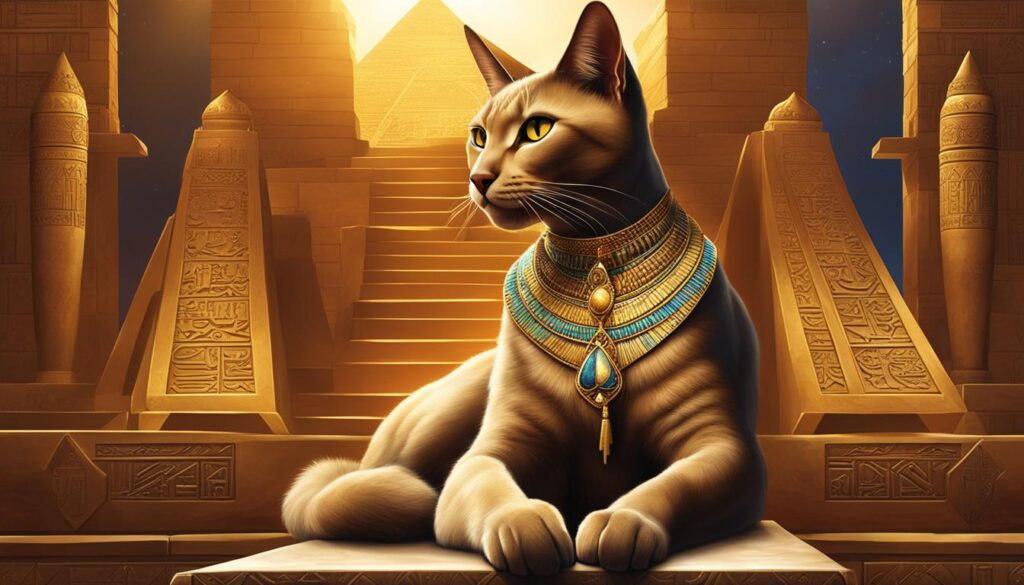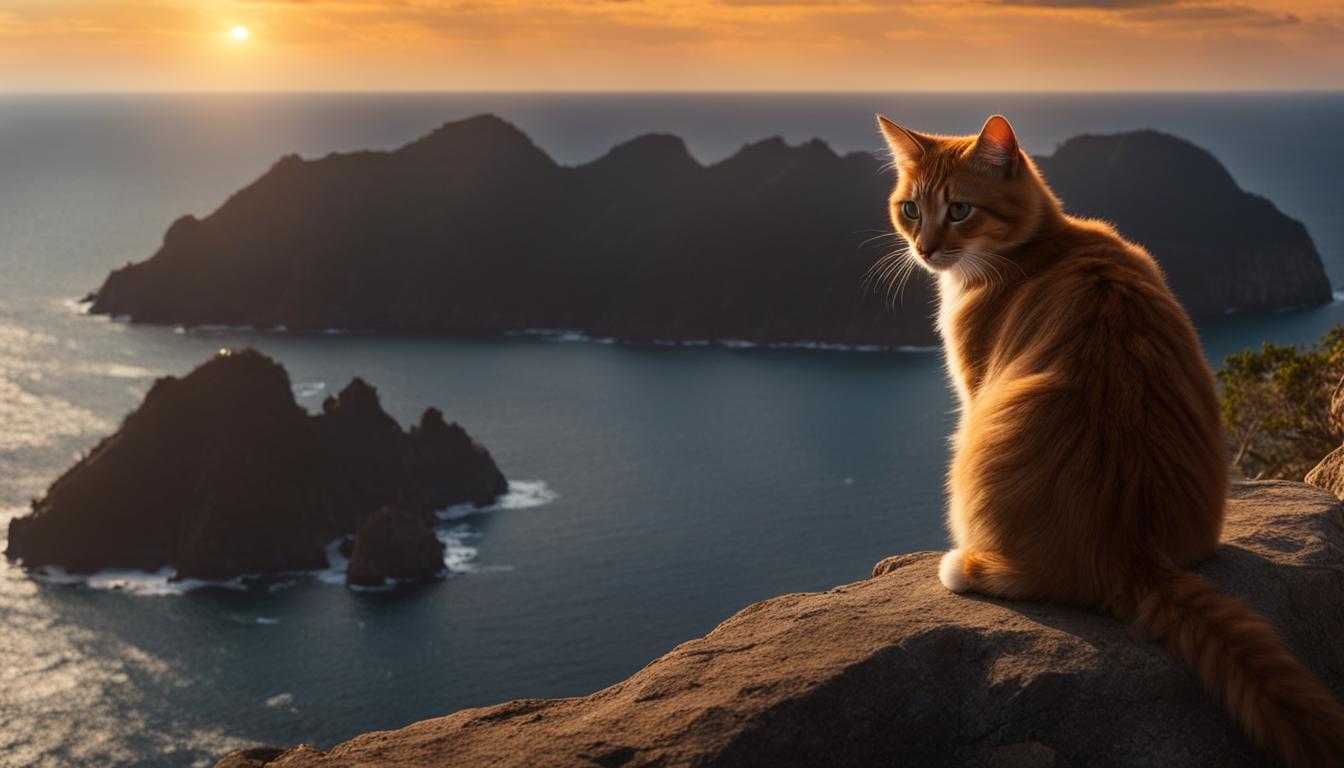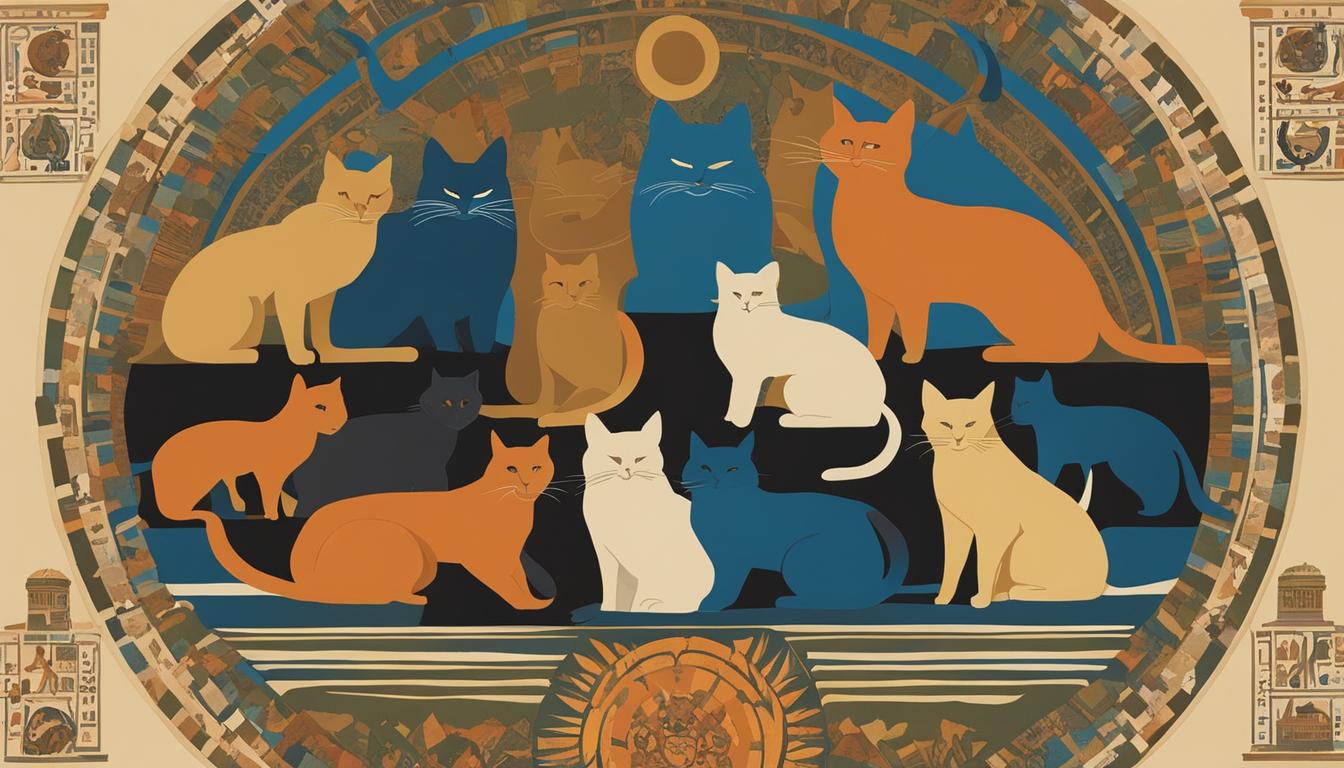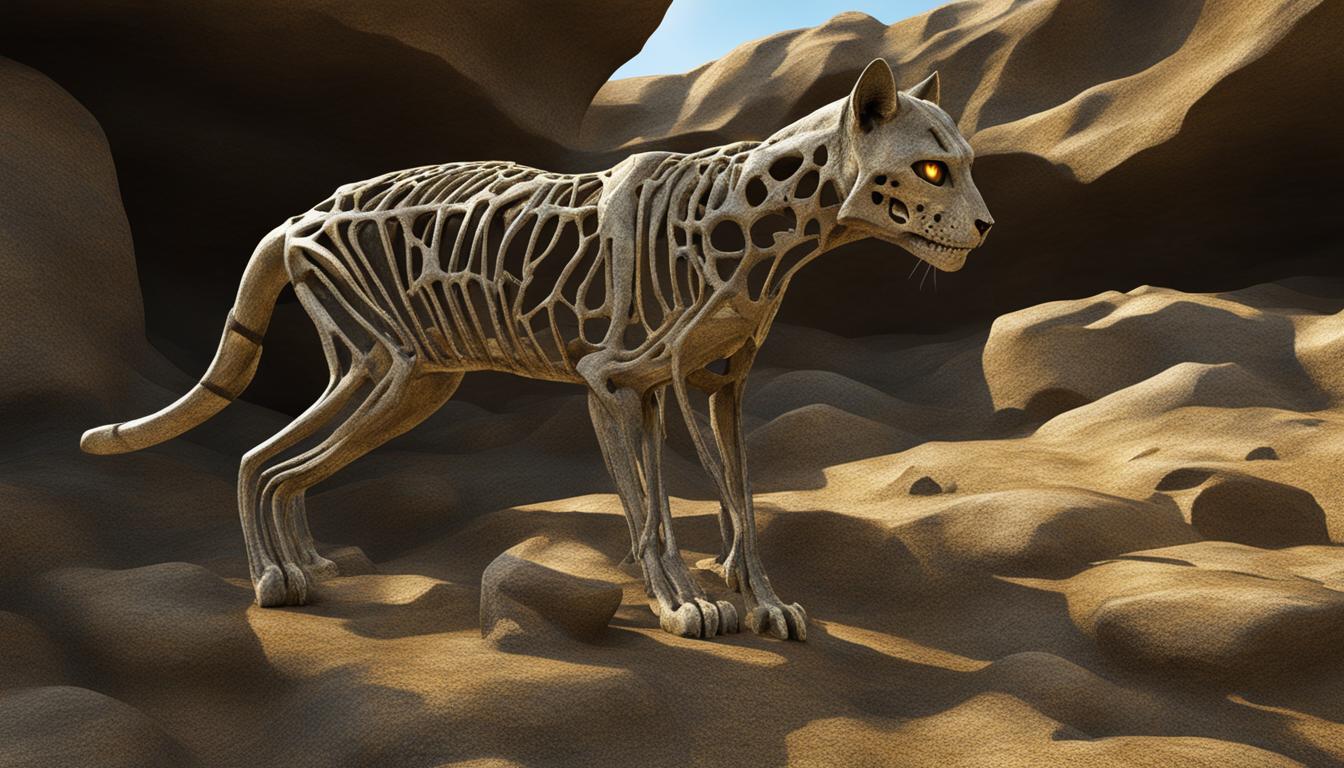Have you ever wondered how cats have managed to conquer the world? Well, I have, and let me tell you, their journey is nothing short of extraordinary. Cats, those mysterious and mischievous creatures, have followed humans to six continents, leaving pawprints in every corner of the globe. From the bustling streets of Europe to the ancient ruins of Egypt, and even to the far reaches of Australia, these feline explorers have carved out their place in history.
Through a decade-long study analyzing DNA from ancient cat skeletons and mummies, we have unraveled the secrets of their global conquest. The evidence reveals that cats originated in Anatolia and Egypt, using their irresistible charm to charm humans and hitch a ride on trade routes. Along the way, they interbred with local wildcats, adapting and evolving to be the purrfect companions.
Key Takeaways:
- Cats’ continental journey has been a remarkable success, spreading to six continents across the globe.
- Genetic analysis shows how cats followed humans along trade routes, interbreeding with local wildcats.
- Cats played a significant role in ancient civilizations, such as Egypt, Rome, and Viking cultures.
- They have made themselves at home in America and Australia, adapting and thriving in various environments.
- Cats’ global spread highlights the complex relationship between cats and humans throughout history.
Cats’ Journey from the Middle East to Europe
The spread of cats from the Middle East to Europe is a fascinating chapter in feline history. Genetic analysis has revealed that as early as 4,400 B.C.E., cats from Anatolia (modern-day Turkey) made their way into Europe, following the footsteps of humans and leaving their genetic footprint along the way. These ancient cats interbred with local wildcats, creating a genetic exchange that occurred both ways along the trade routes.
One intriguing discovery is the presence of cat DNA in ancient European sites, indicating their involvement in early European exploration. This evidence suggests that cats played a significant role in the journeys of early European explorers, accompanying them as invaluable companions on their travels. The intermingling of cat DNA from different regions, such as India and Egypt, further showcases the extensive reach of cats’ influence in ancient Europe.
“The presence of cat DNA in ancient European sites indicates their involvement in early European exploration.”
The spread of cats in Europe is not only a tale of genetic exchange but also a testament to their adaptability and ability to thrive in different environments. As cats followed humans into new lands, they adapted to the European landscape, solidifying their place in European history. Today, cats remain a beloved presence in countless European households, a testament to their enduring affinity with humans.
To further illustrate the journey of cats from the Middle East to Europe, we present the following table:
| Region | Timeline |
|---|---|
| Anatolia (Modern-day Turkey) | 4,400 B.C.E. |
| Ancient European sites | Presence of cat DNA |
| Interbreeding with local wildcats | Genetic exchange along trade routes |
This table showcases the timeline and key events of cats’ journey, highlighting their expansion into Europe and the genetic influence they left behind. It reflects the fascinating interplay between cats and humans, as well as the impact of their presence in the ancient world.

In the next section, we will delve into the role of cats in ancient Egypt – a civilization that held a unique reverence for these enigmatic creatures.
The Role of Cats in Ancient Egypt
When we think of ancient Egypt, one of the first images that comes to mind is the majestic feline companion known as the Egyptian cat. These revered animals held a special place in Egyptian society, serving as objects of worship and beloved companions to humans. Ancient Egyptians recognized the unique qualities of cats, including their hunting prowess, graceful nature, and ability to protect crops from rodents.
“In ancient Egypt, cats were more than just pets; they were considered sacred beings. The Egyptians worshipped the goddess Bastet, who took the form of a lioness or a domestic cat. Cats were believed to bring good fortune and protect against evil spirits,”
explains renowned Egyptologist Dr. Zara Williams.
The deep reverence for cats in Egyptian culture is evident from the numerous cat mummies discovered in ancient tombs. These mummified felines were buried alongside their human counterparts, symbolizing their importance in the afterlife. The intricate rituals and elaborate ceremonies surrounding the burial of cat mummies further emphasize the significance of cats in ancient Egyptian beliefs and customs.
The influence of Egyptian cats spread beyond the borders of Egypt itself. They became popular among the Romans and Vikings, who recognized their usefulness in controlling pests on their ships during long voyages. The presence of cats in ancient Roman and Viking port cities highlights their role in maritime trade and their ability to ensure the safety of food supplies by keeping rodent populations in check.
The Legacy of Egyptian Cats
The legacy of Egyptian cats extends far beyond their time in ancient Egypt. Their presence in different cultures and their impact on human societies shaped the history of cats as we know it.
| Period | Significance |
|---|---|
| Roman Empire | Roman society embraced the concept of cats as protectors and companions. Cats were highly regarded and served as valuable assets in controlling the rat population within cities. |
| Viking Age | Vikings saw the practicality of cats on their long voyages, as they kept rats and other vermin away from their ships’ food supplies. These seafaring warriors even had a cat god named Freyja, who was associated with fertility and abundance. |
The enduring influence of Egyptian cats throughout history showcases the deep bond between humans and their feline counterparts. From their role in ancient Egypt to their spread across different civilizations, cats have captivated our hearts and minds for thousands of years.

Cats in the Americas
When Europeans set sail for the Americas, they unwittingly brought along furry companions who would leave a lasting impact on the new continent. Cats, already established as shipmates, played a vital role in early American settlements. Their skill in controlling rodent populations made them invaluable assets, ensuring the survival of colonies by protecting food stores from destructive pests. The introduction of cats to America marked the beginning of their spread in the Americas, as they adapted and thrived in various environments.
Today, cats have firmly established themselves in the Americas, becoming beloved pets in countless households. In the United States alone, approximately one-third of homes are inhabited by these graceful creatures, totaling a staggering 93.5 million house cats. The presence of cats in early American settlements and their subsequent integration into society showcases the enduring bond between humans and felines throughout history.
South American history is also intertwined with the presence of cats. As European powers colonized the continent, cats traveled alongside the colonizers, fulfilling their role as rodent controllers. This feline presence in South America further solidified the spread of cats throughout the Americas, leaving an indelible mark on the continent’s history.
Cats in Early American Settlements
In early American settlements, cats played a crucial role in protecting food stores and ensuring the survival of the colonies. Their excellent hunting abilities kept rodent populations in check, preventing the destruction of valuable supplies. With their keen senses and agile movements, cats proved to be efficient guardians, silently patrolling the settlements and keeping them free from pests.
The presence of cats in early American settlements highlights their indispensable role as pest controllers and their close association with human communities. As silent protectors, they safeguarded the livelihood of early colonizers and secured their place in the Americas.
Their value as skilled hunters and companions to humans forged a deep bond between cats and the early American settlers. These feline companions provided not only practical benefits but also emotional support, offering comfort and companionship in the face of the challenges of establishing new colonies in a hostile environment.
Spread of Cats in the Americas
The introduction of cats to America marked a pivotal point in their global spread. As European settlers established colonies and expanded their presence across the continent, cats accompanied them on their journeys. Cats adapted easily to the diverse landscapes of the Americas, from the dense forests of the Amazon to the arid plains of the American Southwest.
Through their ability to adapt and thrive in a range of environments, cats quickly spread throughout the Americas. This successful colonization saw cats becoming an integral part of the continent’s ecosystems, exerting their influence on the delicate balance of native wildlife.
The journey of cats from their origins in the Middle East to the Americas represents a remarkable narrative of human exploration and the enduring companionship between humans and cats.
| Region | Number of Households with Cats |
|---|---|
| United States | 93.5 million |
| Canada | 8.8 million |
| Mexico | 11.1 million |
This table showcases the prevalence of cats in households across North America, illustrating their widespread presence and the significant role they play in the lives of millions of people in the Americas.

Cats’ Spread in Australia
Australia, known for its unique wildlife, has also become a playground for cats. The spread of cats in this vast continent has had a significant impact on the indigenous fauna. Introduced by European settlers during the colonization period, cats have adapted and multiplied, posing a threat to the delicate balance of Australia’s ecosystems.
The impact of cats on indigenous fauna in Australia cannot be underestimated. With their predatory nature and hunting instincts, cats have caused devastating effects on native species, particularly small mammals, birds, and reptiles. The introduction of cats to Australia has disrupted the natural food chain, leading to the decline of many native species and the loss of biodiversity.
Colonization played a crucial role in the feline spread across Australia. As European settlers arrived, they brought cats along for pest control purposes. However, these cats not only targeted rodents but also preyed upon native wildlife, which had no natural defenses against such efficient predators. As a result, the unraveling of Australia’s unique ecological tapestry began, with the impact of cats echoing through the years.
The Impact of Cats on Indigenous Wildlife in Australia
| Indigenous Fauna Affected | Effects of Cats |
|---|---|
| Small mammals | Predation and decline in population |
| Birds | Predation, nest destruction, and decline in population |
| Reptiles | Predation and decline in population |
As the table demonstrates, the impact of cats on indigenous fauna in Australia has been severe. The introduction of non-native predators has pushed several species to the brink of extinction. Efforts are underway to manage and mitigate the impact of feral cats through conservation programs, predator-proof fencing, and targeted eradication campaigns to protect vulnerable ecosystems and safeguard the future of Australian wildlife.

In the next section, I’ll explore the fascinating origins and historical migration of cats in Africa, shedding light on their influence on the continent’s biodiversity.
The African Origins and Spread of Cats
When delving into the fascinating history of cats, it is impossible to overlook their African origins. Genetic analysis of ancient cat remains has shed light on the first cats in Africa and their subsequent migration across the continent. Unearthing this feline ancestry has provided invaluable insights into the historical journey of these beloved creatures.
Studies have revealed that the genetic profile of cats in Africa closely resembles that of cats in the Middle East, suggesting a shared ancestry between the two regions. As human populations migrated out of Africa, they carried these feline companions with them, leading to the spread of cats across the continent. This migration, driven by human exploration and trade, shaped the feline landscape of Africa and contributed to the diverse cat populations we see today.
The historical migration of cats in Africa is a testament to the enduring partnership between cats and humans. Cats not only provided companionship to early explorers and traders but also played a vital role in controlling rodent populations in ships and settlements, ensuring the survival and success of these human communities. As cats traveled alongside humans, they adapted to different environments, showcasing their remarkable resilience and adaptability.
The African origins and subsequent spread of cats across the continent encapsulate a rich and complex history. These small, enigmatic creatures have left an indelible mark on the tapestry of human civilization, their presence felt in ancient archaeological sites and intertwined with the stories of our ancestors. Exploring the historical migration of cats in Africa deepens our understanding of the enduring bond between humans and these captivating creatures.
Cats in Asia
As cats spread across the world, they also made their way to Asia through trade routes and cultural exchanges. The introduction of cats to Asia played a significant role in shaping the continent’s history and their interactions with humans. The presence of cats in ancient Asian civilizations can be traced through the analysis of DNA from archaeological remains.
A study analyzing ancient cat DNA in various regions of Asia, including China, India, and the Middle East, provides insight into the early presence of cats in the continent. Cats were not only valued for their companionship but also for their ability to control pests. Their role in pest control was especially crucial in Asian societies, where agriculture played a significant role in sustaining communities.
Furthermore, cats became significant cultural symbols in Asian history. In China, for example, cats were believed to bring good luck, and they were often depicted in art and folklore. In Japanese culture, cats were revered as protectors against evil spirits.
Notable Ancient Asian Cat Breeds
| Asian Cat Breed | Origin | Characteristics |
|---|---|---|
| Japanese Bobtail | Japan | Short tail, playful, and sociable |
| Singapura | Singapore | Small size, affectionate, and playful |
| Turkish Van | Turkey | Semi-longhair coat, love for water, and energetic |
The influence of cats in Asian history and culture is undeniable. From their role in pest control to their symbolic significance, cats have left their pawprints in the continent’s rich tapestry of traditions and folklore. The exploration of ancient cat DNA continues to shed light on the fascinating journey of cats and their enduring presence in Asia.
Conclusion
Reflecting on the fascinating journey of cats, it is clear that their global spread has been nothing short of remarkable. The study of ancient cat DNA has provided us with invaluable insights into their continental introduction and subsequent expansion across the world.
Originating from the Middle East, cats embarked on a journey that would see them traverse six continents. As humans traveled along trade routes, cats followed closely, interbreeding with local wildcats and leaving traces of their ancient DNA behind.
This intercontinental adventure showcases the incredible adaptability and success of these feline companions. Through their inherent ability to control rodents and their exceptional aptitude for acclimating to diverse environments, cats have emerged as one of the most prosperous domesticated species in history.
As we delve deeper into the intertwined history of cats and humans, we discover the profound impact they have had on ecosystems worldwide. From the revered status of ancient Egyptian cats to the unintended consequences of their introduction to Australia, cats have left an indelible mark on the planet.
In conclusion, the study of ancient cat DNA highlights the intricate relationship between humans and these enigmatic creatures. Cats’ continental introduction and global spread underscore their remarkable success story, making them a beloved and integral part of our shared history.
FAQ
How did cats spread to different continents?
Cats followed humans on trade routes, interbreeding with native wildcats along the way, which allowed them to spread to six continents.
When did cats first arrive in Europe?
Genetic analysis shows that cats from Anatolia in modern-day Turkey spread to Europe as early as 4,400 B.C.E.
What role did cats play in ancient Egyptian society?
Cats held a special place in ancient Egyptian society, being objects of worship and companions to humans.
How did cats contribute to early American settlements?
Cats played a role in early American settlements by helping control rodent populations.
How have cats impacted the native fauna in Australia?
Cats, introduced by European settlers, have become feral and pose a threat to native wildlife in Australia.
Where do the origins of cats trace back to?
Cats originated in Africa and their genetic profile in the Middle East indicates a shared ancestry.
How did cats make their way to Asia?
Cats were introduced to Asia as humans traveled and traded along various trade routes.
What insights does the study of ancient cat DNA provide?
The study provides valuable insights into the global spread of cats, their coexistence with humans throughout history, and their impact on ecosystems worldwide.





